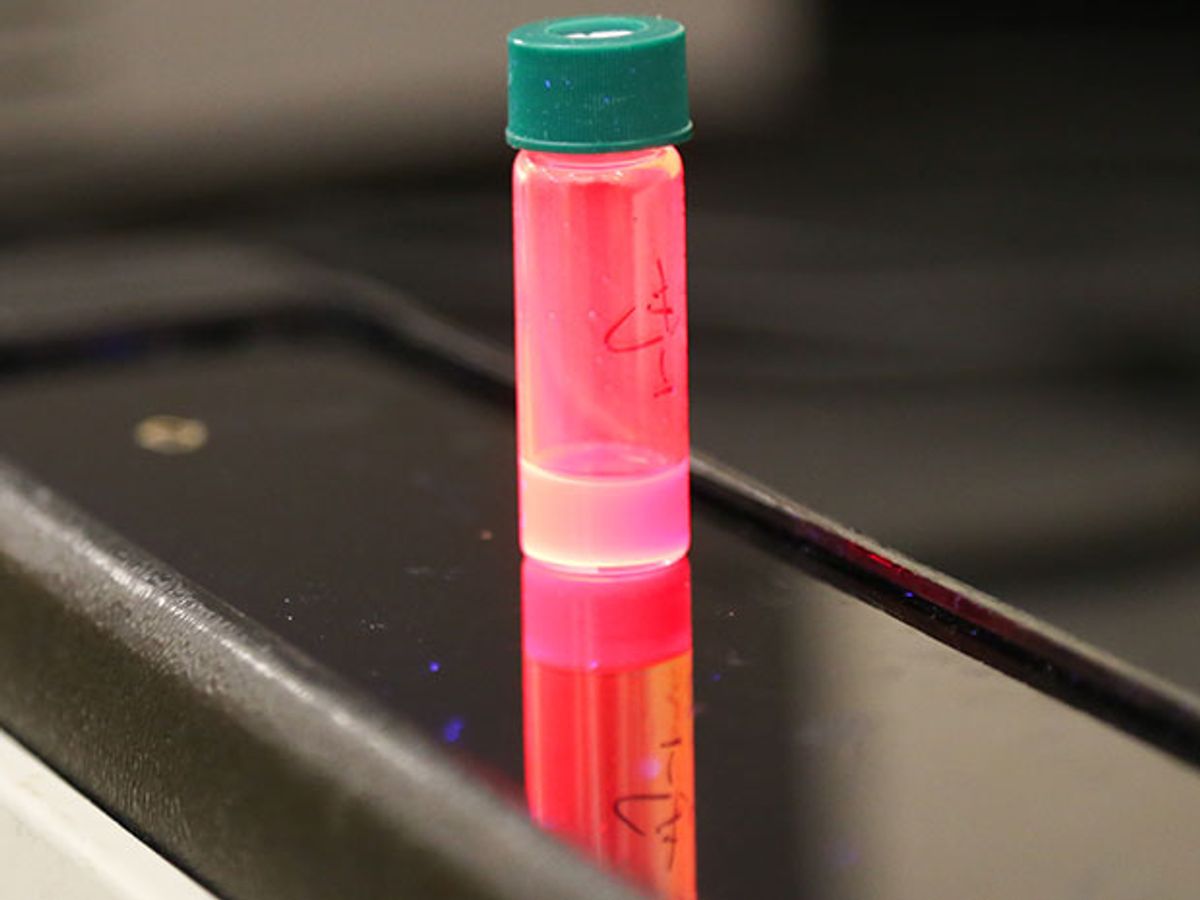Ted Sargent and his team at the University of Toronto have done many things with quantum dots: boost solar cell efficiency, invent infrared imagers, optoelectronics you can apply with a paint brush. Now Sargent and his team have added a new spice to their recipe for colloidal quantum dots that promises to change the struggling prospects of quantum dot-based lasers. If the new approach lives up to its promise, it could lead to brighter, less expensive, and tunable lasers for video projectors and medical imaging among other applications.
In research described in the journal Nature, Sargent developed technology for producing quantum dots that have an elliptical, flying-saucer shape. That shape solves a problem with today’s quantum-dot-based lasers: They need to be continually stimulated with more and more power to keep them emitting light, and such stimulation eventually leads to overheating.
It was 15 years ago when Victor Klimov and his team at Los Alamos National Laboratory became the first to fabricate a quantum dot laser. Since then, these QD-based lasers have proven themselves to be bright light emitters that can absorb a lot of energy and re-emit it at a particular frequency.
However, because they need increasing amounts of light to function, most quantum-dot-based lasers are only called upon to provide short pulses of light—just a few nanoseconds.
In a somewhat surprising approach, the researchers looked at changing the shape of the quantum dots rather than their size. Researchers have always been able to precisely tune the wavelength of light emitted by quantum dots by manipulating their size: dots that are 2 nanometers in diameter emit blue light, a 4-nm dot emits green, and a 6-nm dot emits red.
Instead of adjusting the size, the Sargent and his colleagues formed the dots into elliptical structures in which the quantum dot’s core remains spherical and the outer shell takes on a squashed spherical shape, a bit like a flying saucer.
“The shell absorbs light, using the energy of photons to bring electrons higher in energy (excited state of electrons, or in other words exciton), then electrons give energy back and the core emits light,” explains Alex Voznyy, a senior research associate in Sargent's lab, in an e-mail interview with IEEE Spectrum.
The introduction of the mismatch in shapes addresses a key problem with colloidal quantum dots. The valence band contains the energy levels normally occupied by electrons. However, at the edges of the valence band in colloidal quantum dots, the electrons can have two or more closely spaced energy levels—a condition known as degeneracy of electron states.
“The asymmetric shell introduces biaxial (asymmetric) strain on the core,” says Voznyy. The strain affects the electronic levels of the core, spreading them out, and making them less degenerate, he says. This lets you achieve population inversion—a condition for lasing—with less excitation.
To create the shape, Sargent and his team adapted their colloidal approach to synthesis for which the are leaders. The synthesis of colloidal quantum dots involves constructing the crystals in liquid solutions rather than the deposition of molecules in a vacuum.
The twist to this new research was the addition of capping molecules. These allowed them to switch on and off the growth of the outer shells of the quantum dots, and in this way control their shape. In particular, the researchers used a two-step shell growth.
“In the first step, the shell grows asymmetrically because we mix two types of [precursor chemicals], which compete with each other: one... blocks one surface and doesn't let the other adsorb there; this gives the asymmetry,” says Voznyy. “The second shell uses a precursor chemical which grows everywhere and provides better overall passivation.”
At this point, we shouldn’t expect that this is going to change the landscape of semiconductor lasers. The aim right now is to keep decreasing the lasing threshold even further to completely eliminate heating issues. The ultimate aim is to eliminate the use of light for exciting the quantum dots and instead to use electricity.
“The ultimate goal is electrically pumped lasers,” adds Voznyy. “For this, [quantum dot] films have to become conductive enough to sustain kiloamperes of injected current.”
Dexter Johnson is a contributing editor at IEEE Spectrum, with a focus on nanotechnology.



